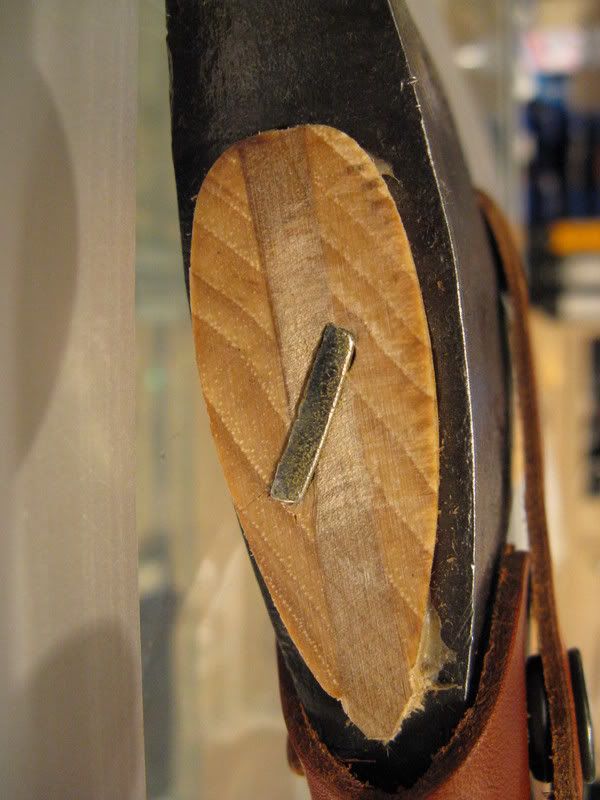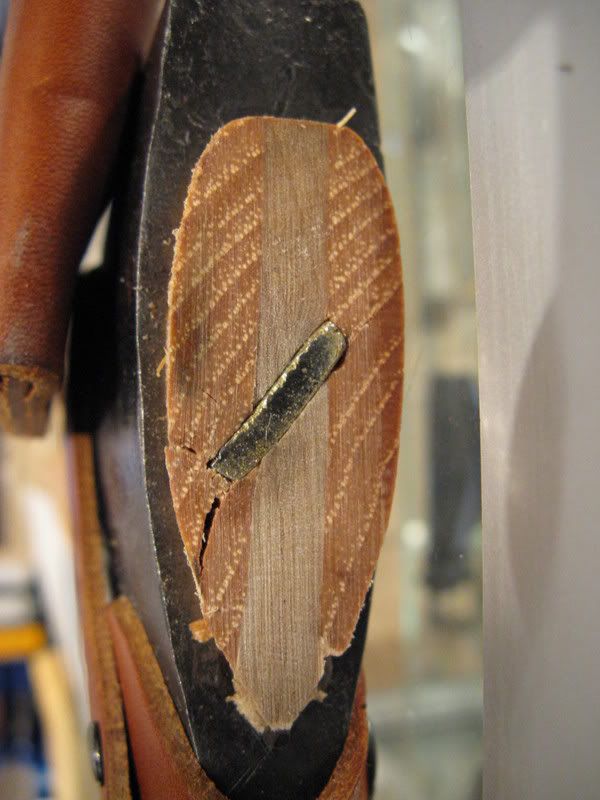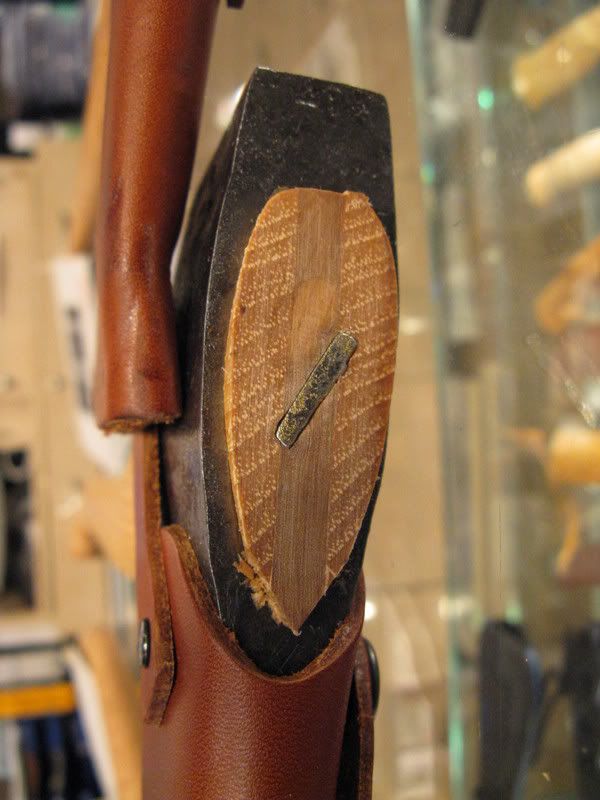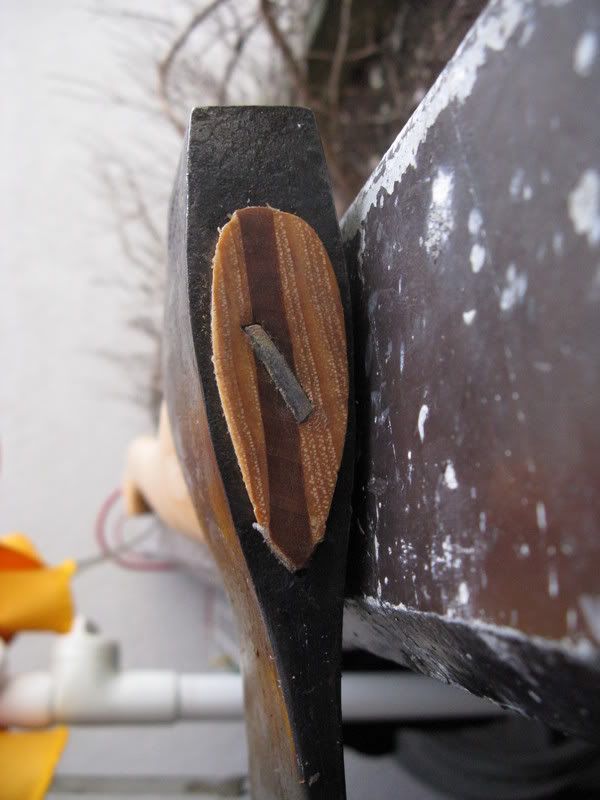Recently, a friend of mine wanted to have a GB LFA of his own.
And since I was paying a visit to a friend in Frankfurt, who lives very close to a big outdoor store who stocks gransfors, I agreed to get him one.
They had five in stock, so it was possible to select a good one. Which was my sine qua non on purchasing it.
Oh my, what a load of manure they had in stock. I secretly photographed them all to show you.
The good news first, they were all quite expertly hung. The edge was always in line with the middle 5mm of the butt and when resting edge and butt on a level surface, the edge touched in the middle or the rear third.
But the handles were a bit different, see here.
3x times "normal":



One was really good, with an offset wedge:

On all four, the grain was slightly twisted along the handle, so at the left upper hand of the handle´s shoulder there was a bit non-continuous grain.
So far, a level of quality I am used from GB.
No 5 was awful:


Except for a bit on top, the handle was completely heartwood.
This is not acceptable and I wonder that such a handle had made it through the various
stages of production, let alone "quality control".
Someone really should have binned it.
Now I know, that even such an axe will rarely be used in a way that it will outwear over time. Nearly no one makes a living with an axe anymore or has his life depend on it.
But I cant stand it, when the well-known and established standards of a craft erode over time simply because 99,999% of the customers dont know any better.
Its a fact, and has probably a sound financial origin, but I detest it nevertheless.
Thats also the fact why I wouldnt mailorder an axe anymore. In the shop where I work, we stock the Hatchet and the small splitting axe. I could order, and get with a discount of 30%, every product from GB I would like to have. I wont do it.
I know that there are different levels of quality throughout the GB range.
As a premium product, the Hatchet is usually excellent. Rarely some strings of heartwood, the grain is better than 45° to the vertical, the edges are aligned really good.
The splitting axe is always 80-100% heartwood. Probably more than ok for the kind of people who buy it to split some wood for the oven on a sunday afternoon.
But the batch of LFA I encountered is a bit off, to say the least. Especially for the price! and their claim of excellent craftmanship.
What do you think?
And since I was paying a visit to a friend in Frankfurt, who lives very close to a big outdoor store who stocks gransfors, I agreed to get him one.
They had five in stock, so it was possible to select a good one. Which was my sine qua non on purchasing it.
Oh my, what a load of manure they had in stock. I secretly photographed them all to show you.
The good news first, they were all quite expertly hung. The edge was always in line with the middle 5mm of the butt and when resting edge and butt on a level surface, the edge touched in the middle or the rear third.
But the handles were a bit different, see here.
3x times "normal":



One was really good, with an offset wedge:

On all four, the grain was slightly twisted along the handle, so at the left upper hand of the handle´s shoulder there was a bit non-continuous grain.
So far, a level of quality I am used from GB.
No 5 was awful:


Except for a bit on top, the handle was completely heartwood.
This is not acceptable and I wonder that such a handle had made it through the various
stages of production, let alone "quality control".
Someone really should have binned it.
Now I know, that even such an axe will rarely be used in a way that it will outwear over time. Nearly no one makes a living with an axe anymore or has his life depend on it.
But I cant stand it, when the well-known and established standards of a craft erode over time simply because 99,999% of the customers dont know any better.
Its a fact, and has probably a sound financial origin, but I detest it nevertheless.
Thats also the fact why I wouldnt mailorder an axe anymore. In the shop where I work, we stock the Hatchet and the small splitting axe. I could order, and get with a discount of 30%, every product from GB I would like to have. I wont do it.
I know that there are different levels of quality throughout the GB range.
As a premium product, the Hatchet is usually excellent. Rarely some strings of heartwood, the grain is better than 45° to the vertical, the edges are aligned really good.
The splitting axe is always 80-100% heartwood. Probably more than ok for the kind of people who buy it to split some wood for the oven on a sunday afternoon.
But the batch of LFA I encountered is a bit off, to say the least. Especially for the price! and their claim of excellent craftmanship.
What do you think?

